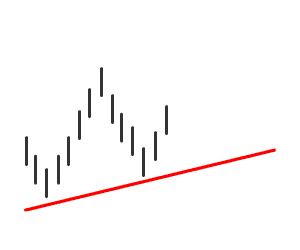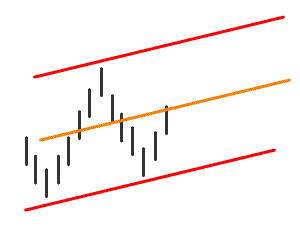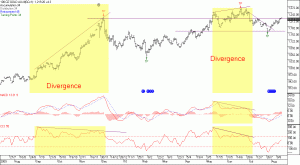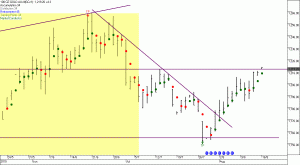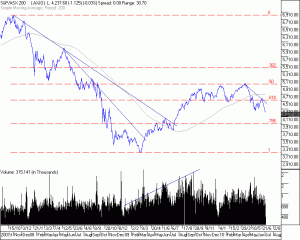Sooner or later we all end up with a losing position on a good quality share, we may feel that we can ride out the slump and wait for the market to regain its former glory. One technique we can use to assist is to average down our purchase price. With this strategy we would purchase another parcel of shares at a lower value effectively lowering the average purchase price of the entire holding.
Lets say we own a parcel of 1000 shares has been purchased shares for $10.00, and the position is worth less than the original purchase – Say $6.00 per share. Lets assume that no risk management has been applied (because if it was, you wouldn’t be in this position). Buying another 1000 shares at $6.00 would lower the complete average on the asset to $8.00.
So lets look at the right time and the wrong time to do this. The wrong time is when the market is falling, if you are averaging down into a falling market is very difficult to achieve a good result, because we don’t know how far the price will fall. If the price falls to $3.00 your decision to average down hasnt been a good one. The ramifications of getting this wrong may impact on your positions profitability, it may create an imbalance in your portfolio or in the worst cases give you greater exposure to a dying asset.
A more appropriate time to use this strategy would be to wait for the market to form a support base and bounce – at least in this way the market is moving in your favour again. Try to look at it like entering the position again — does it meet my normal entry criteria, if so its the right time – if not then wait until it does, or forget this strategy.
Ideally averaging down with the market bouncing off a support line and forming a bullish pattern is the time to average down, the stronger the move upwards the more likely you will have a successful trade.
In Short: Don’t Average Down into a falling market, go when the market is rising. Getting this right will give you the ability to lower your original entry price so you may trade out of the position with a profit.
Happy Trading

